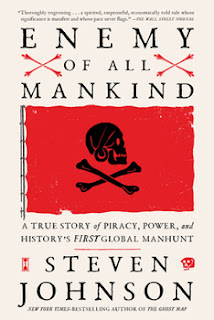The Last Mughal: The Fall of a Dynasty: Delhi, 1857
Reflecting on the conclusion of enduring dynasties, a profound melancholy washes over me. It's a poignant reminder of the timeless Sanskrit adage, "Time devours all," resonating through 5000 years of human existence. The slow decline of civilizations like the Greek and Roman empires serves as a stark testament to the relentless passage of time.
The aftermath of World War I witnessed the demise of formidable powers like the Hapsburg and Ottoman empires, succumbing to military defeat. The tragic fate of the last Romanov Czar in Russia, facing execution, stands as a poignant chapter in this narrative. Similarly, the decline of the Mogul Empire, established by Babur in 1526, marks the end of a 350-year-old dynasty, adding another layer to this saga of history's inevitable march.Jo kisi ke kaam na aa sake, mein vo ek musht-e-gubaar hoon
not the light of any one's eyes,
nor the solace for any one's heart
of no use to anyone,
I am that one fistful of dust
- The story of Mangal Pandey could be augmentation from nationalist historian
- By the end of the siege of Delhi, the British force consisted predominantly of Sikh and Muslim mercenaries from the North West Frontier and Punjab, with about four-fifths of the army being Indian.
2. Bengal: Nawab Siraj-ud-Daula & Jagat Seth (1757)
-
Bengal was the richest province in India.
-
Siraj-ud-Daula, the young Nawab, tried to resist British power.
-
In 1757, the Battle of Plassey became a turning point:
-
The Company defeated Siraj-ud-Daula with the help of Mir Jafar (a traitorous general) and Jagat Seth (a powerful banking family from Murshidabad).
-
Jagat Seths, wealthy moneylenders, financed the Company's coup, expecting stability and profit.
-
-
This victory gave the EIC control of Bengal’s revenue—a massive financial boost.
Mughal Emperor Shah Alam II
-
Sought to restore imperial control over lost territories.
-
Allied with Shuja-ud-Daula (Awadh) and Mir Qasim (new Nawab of Bengal).
-
This triple alliance faced the EIC at the:
⚔️ Battle of Buxar (1764)
-
Allies:
-
Mughal Emperor Shah Alam II
-
Nawab Shuja-ud-Daula (Awadh)
-
Nawab Mir Qasim (Bengal)
-
-
Defeated by British under Hector Munro.
-
- The Empire podcast Mutiny Episode no 3 The Empire podcast Mutiny Episode no 3
- Mangal Pandey: Drug-crazed Fanatatic or Canny Revolutionary?
- Gibbon’s The Decline and Fall of the Roman Empire’The Decline and Fall of the Roman Empire’ Scotsman Books of the Year
Chronology
| Period | Dynasty | Key Figures |
|---|
| c. 1000–1186 | Ghaznavids & Ghurids | Mahmud of Ghazni, Muhammad Ghori |
| 1206–1290 | Mamluk (Slave) Dynasty | Qutb-ud-din Aibak, Iltutmish, Razia |
| 1290–1320 | Khalji Dynasty | Alauddin Khalji |
| 1320–1414 | Tughlaq Dynasty | Muhammad bin Tughlaq, Firoz Shah |
| 1414–1451 | Sayyid Dynasty | Khizr Khan |
| 1451–1526 | Lodi Dynasty | Bahlul Lodi, Sikandar Lodi, Ibrahim Lodi |
| 1526 onward | Mughal Dynasty | Babur, Humayun, Akbar... |
Summary of powerful women Contributions
| Name | Role | Influence/Legacy |
|---|---|---|
| Khanzada Begum | Diplomat, elder stateswoman | Supported Babur, guided Humayun, high moral authority |
| Gulbadan Begum | Historian, writer | Authored Humayun Nama, early female historian |
| Noor Jahan | Empress & de facto ruler | Political power, issued farmans, minted coins |
| Mumtaz Mahal | Chief consort, advisor | Inspired Taj Mahal, wielded informal court influence |
| Jahanara Begum | Imperial woman, patron | Political force, urban planner (Chandni Chowk), Sufi |
| Zeb-un-Nissa | Poet, mystic, scholar | Literary contributions, Sufi legacy |


Comments
Post a Comment